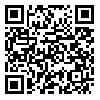دوره 12، شماره 2 - ( 8-1403 )
جلد 12 شماره 2 صفحات 18-14 |
برگشت به فهرست نسخه ها
Download citation:
BibTeX | RIS | EndNote | Medlars | ProCite | Reference Manager | RefWorks
Send citation to:



BibTeX | RIS | EndNote | Medlars | ProCite | Reference Manager | RefWorks
Send citation to:
Abdulelah Abbas Al-Hadeethi A, Taghian F, Jawad Mohammed Al-Jawad Z, Jalali Dehkordi K. Comparative effects of high-intensity interval training and moderate-intensity interval training on CK/LDH/IL-6 markers in male goalball players with visual impairments. Jorjani Biomed J 2024; 12 (2) :14-18
URL: http://goums.ac.ir/jorjanijournal/article-1-1045-fa.html
URL: http://goums.ac.ir/jorjanijournal/article-1-1045-fa.html
Comparative effects of high-intensity interval training and moderate-intensity interval training on CK/LDH/IL-6 markers in male goalball players with visual impairments. فصلنامه علمی پژوهشی زیست پزشکی جرجانی. 1403; 12 (2) :14-18
URL: http://goums.ac.ir/jorjanijournal/article-1-1045-fa.html
چکیده: (7059 مشاهده)
Background: Goalball is a distinctive athletic activity tailored for individuals who are blind or partially sighted. It is aimed at promoting physical activity and preventing sedentary behavior. This study explores the impact of high-intensity interval training (HIIT) and moderate-intensity interval training (MIIT) on muscle damage and inflammation markers in goalball players over eight weeks.
Methods: In this semi-experimental study, 24 male goalball players were randomly assigned to one of three groups: a control group, a HIIT group, and a moderate-intensity interval training (MIIT) group. The HIIT regimen involved intermittent running for 30 seconds at 100-200% of HRR, followed by 30 seconds of active recovery at 50% HRR. The MIIT protocol consisted of 25 minutes of training at 40-50% HRR, progressing to 30-35 minutes at 60-65% HRR over the last four weeks. Data were analyzed using repeated measures ANOVA, with a significance threshold set at P-Value <0.05.
Results: The results displayed that HIIT and MIIT had a significant effect on the concentration of CK (P-Value < 0.001), LDH (P-Value < 0.001), and IL-6 (P-Value < 0.001). Also, compared to MIIT, HIIT caused a significant decrease in the concentration of CK (P-Value < 0.001), LDH (P-Value < 0.001), and IL-6 (P-Value < 0.001).
Conclusion: HIIT exerts a more pronounced effect on CK, LDH, and IL-6 concentrations than MIIT. These findings suggest that HIIT may be more effective in enhancing physiological markers in individuals with disabilities, promoting better health outcomes.
Methods: In this semi-experimental study, 24 male goalball players were randomly assigned to one of three groups: a control group, a HIIT group, and a moderate-intensity interval training (MIIT) group. The HIIT regimen involved intermittent running for 30 seconds at 100-200% of HRR, followed by 30 seconds of active recovery at 50% HRR. The MIIT protocol consisted of 25 minutes of training at 40-50% HRR, progressing to 30-35 minutes at 60-65% HRR over the last four weeks. Data were analyzed using repeated measures ANOVA, with a significance threshold set at P-Value <0.05.
Results: The results displayed that HIIT and MIIT had a significant effect on the concentration of CK (P-Value < 0.001), LDH (P-Value < 0.001), and IL-6 (P-Value < 0.001). Also, compared to MIIT, HIIT caused a significant decrease in the concentration of CK (P-Value < 0.001), LDH (P-Value < 0.001), and IL-6 (P-Value < 0.001).
Conclusion: HIIT exerts a more pronounced effect on CK, LDH, and IL-6 concentrations than MIIT. These findings suggest that HIIT may be more effective in enhancing physiological markers in individuals with disabilities, promoting better health outcomes.
| بازنشر اطلاعات | |
 |
این مقاله تحت شرایط Creative Commons Attribution-NonCommercial 4.0 International License قابل بازنشر است. |



